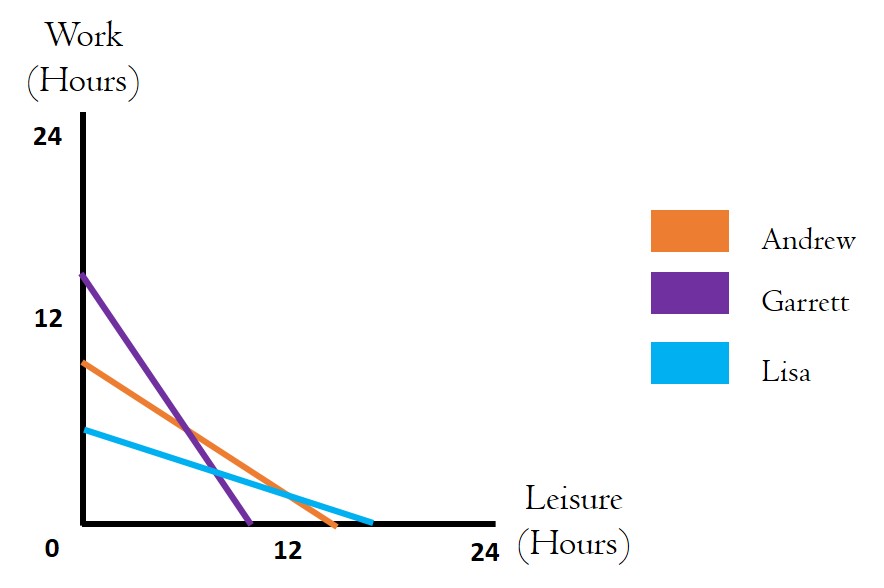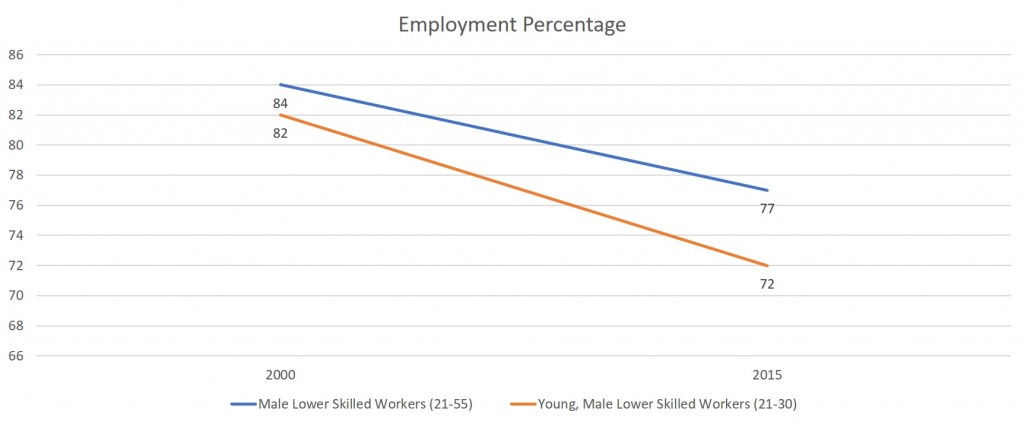As technology has advanced, we have seen the effect it can have on labor demand, especially for lower-skilled workers. Erik Hurst, an economist at the University of Chicago, decided to look at how technological change influenced the other side of the market, or labor supply. Hurst, along with his co-authors Aguiar, Bils, and Charles released a working paper called .Leisure Luxuries and the Labor Supply of Young Men examining the impact of video games and other recreational computer activities on the willingness of young men to act as labor suppliers.
A Theory of Individual Labor Supply
One way which economists have looked at an individual’s willingness to work is by graphing their allocation of time between work and leisure. In this graph, leisure is defined as all time spent not working in a day. Since the 24 hour day is constant, we assume that each person starts with 24 hours, then allocates them in accordance with their preferences regarding income from work versus leisure time. So in the picture below, Andrew spends 10 hours at work, and 14 in leisure. Conversely, Garrett spends 14 hours at work and only ten hours in leisure pursuits.

Some factors that may influence an individual to decide to change their allocation of time would include: a change in the wage paid for work, overtime representing a good example; a sufficient amount of income, after which the marginal hour of work is less valuable than an additional hour of leisure; or more fun things to do in leisure time, such as playing video games, which has the effect of increasing the opportunity cost of an additional hour of work. Or as Erik Hurst put it at the 2016 Convocation at the University of Chicago Booth School of Business,
“Certain technologies—such as video games and social media and the internet—have increased the value of leisure time.”
This may explain why a person such as Lisa in the above graph would allocate 16 hours to leisure and only 8 to work. The increased value of leisure time has a similar effect to an increase in the reservation wage of a laborer.
The Part With All The Stats
This paper also has a lot of empirical data to back up the conclusion that video games had an impact on labor force participation even once the Great Recession was accounted for.
For instance, there was a larger drop in employment for young, lower-skilled men than there was for either all lower-skilled workers and for older, lower-skilled men.
- In 2015, 22 percent of lower-skilled men aged 21–30 had not worked at all during the prior 12 months. In 2000, it was a little under 10 percent.
- Between 2004 and 2007, men aged 21-30 played an average of 2 hours of video games per week, but in 2014 that number had jumped to 3.4 hours.
- A New York Times article outlined many of the changes in leisure times here if you’re interested in comparing between different demographics.
As for policy implications, the research indicates that either the value of leisure time would need to fall (unlikely) or wages would need to increase in order to bring those young men back into the labor force. Wages tend to increase when unemployment is low, as firms are trying to attract employees. Maybe we’ll see a change in the near future, but it would be unexpected.


I’m sharing this explanation with my friends who work with this cohort group and I know they will appreciate having their intuitions confirmed. Thanks for the clarity and the useful resource.
And of course, here is some skepticism from Noah Smith:
https://www.bloomberg.com/view/articles/2017-07-11/young-men-give-up-work-for-video-games-be-skeptical
In part, it may be that video games are merely substituting for other leisure activities: for young unemployed men, avg video game hours have gone up, while overall leisure activity hours have gone down.